Bright Pre-dawn Planets Align, Mercury Mounts After Sunset, and the Brightening Moon Brings Easter!

The western portion of the moon is largely covered by the dark Oceanus Procellarum. Major craters Copernicus and Kepler are surrounded by blankets of ejecta and ray systems. Under magnification, look for small craters with dark haloes around Copernicus. The Reiner Gamma Swirl and Aristarchus regions are interesting, too.
Hello, April Stargazers!
Here are your Astronomy Skylights for the week of April 10th, 2022 by Chris Vaughan. Feel free to pass this along to your friends and send me your comments, questions, and suggested topics. You can also follow me on Twitter as @astrogeoguy! Unless otherwise noted, all times are expressed in Eastern Time. To subscribe to these emails please click this MailChimp link.
If you’d like me to bring my Digital Starlab portable inflatable planetarium to your school or other daytime or evening event, or deliver a session online, contact me through AstroGeo.ca, and we’ll tour the Universe, or the Earth’s interior, together! My terrific new book with John A. Read entitled 110 Things to See With a Telescope is a guide to viewing the deep sky objects in the Messier List – for both beginners and seasoned astronomers. DM me to order a signed copy!
The moon will shine brightly in evening wordwide this week as it waxes to the Full Paschal Moon on Saturday. Meanwhile, Mercury will ascend the western sky after sunset, four bright planets (and Neptune) will form a line before sunrise, and the Lyrids shower will begin. Read on for your Skylights!
The Moon
The moon will be spending this week shining brightly in the evening sky worldwide as it waxes toward fully illuminated on Saturday. At this stage in the 29-day lunar month, our natural satellite rises during the daylight hours – so it may catch your eye long before sunset. It is perfectly safe to view the moon in binoculars and telescopes in daytime, as long as you (and the youngsters) take care not to aim any optics near the sun. You can make views of the pale moon pop in the daytime by viewing it through polarized sunglasses, or the 3D glasses used in the cinema. Rotate your head while looking in the telescope and find an angle where the sky is darkened and the moon brightened.
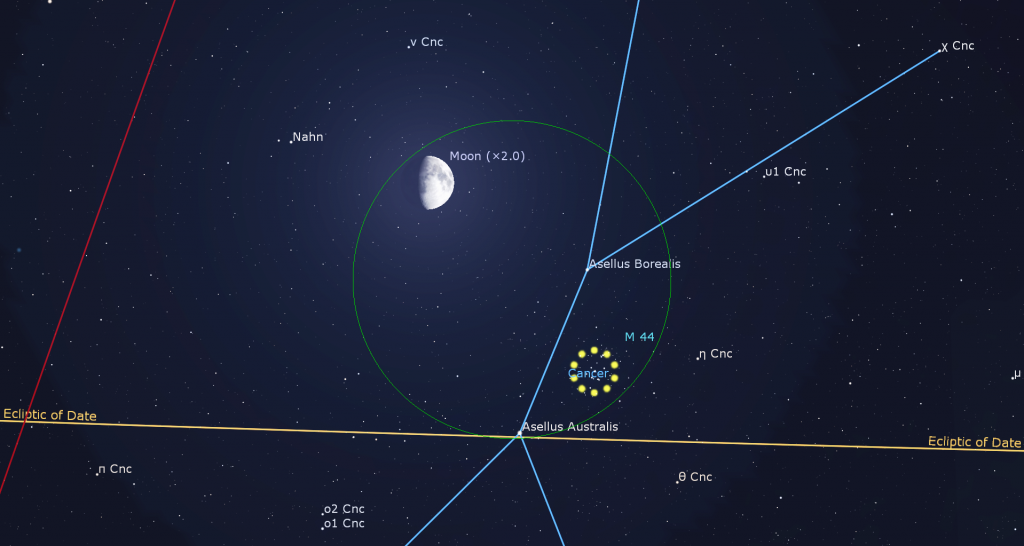
In binoculars and telescopes, the best parts of the moon to look at are the areas on the lit side of the curved, pole-to-pole terminator, the boundary that separates the lit and dark lunar hemispheres. The terrain there will be illuminated by nearly horizontal rays of sunlight – casting long shadows to the left (lunar west) of tall peaks and crater rims, and shorter shadows alongside subtle ridges and hillocks.
Since the moon is continuously sliding eastward in its orbit around Earth, it shifts by its own diameter every hour, compared to the background stars. That motion is also increasing it angle from the sun, so the terminator creeps west, too. In as little as an hour or two, you can see changes in shadow lengths, and see craters emerge from darkness. New strips of the moon are highlighted each night. (After full moons, the situation flips left for right. The shadows fall in the opposite direction and the moon wanes in phase each night. But you need to be viewing the moon in the second half of the night to see those scenes.)
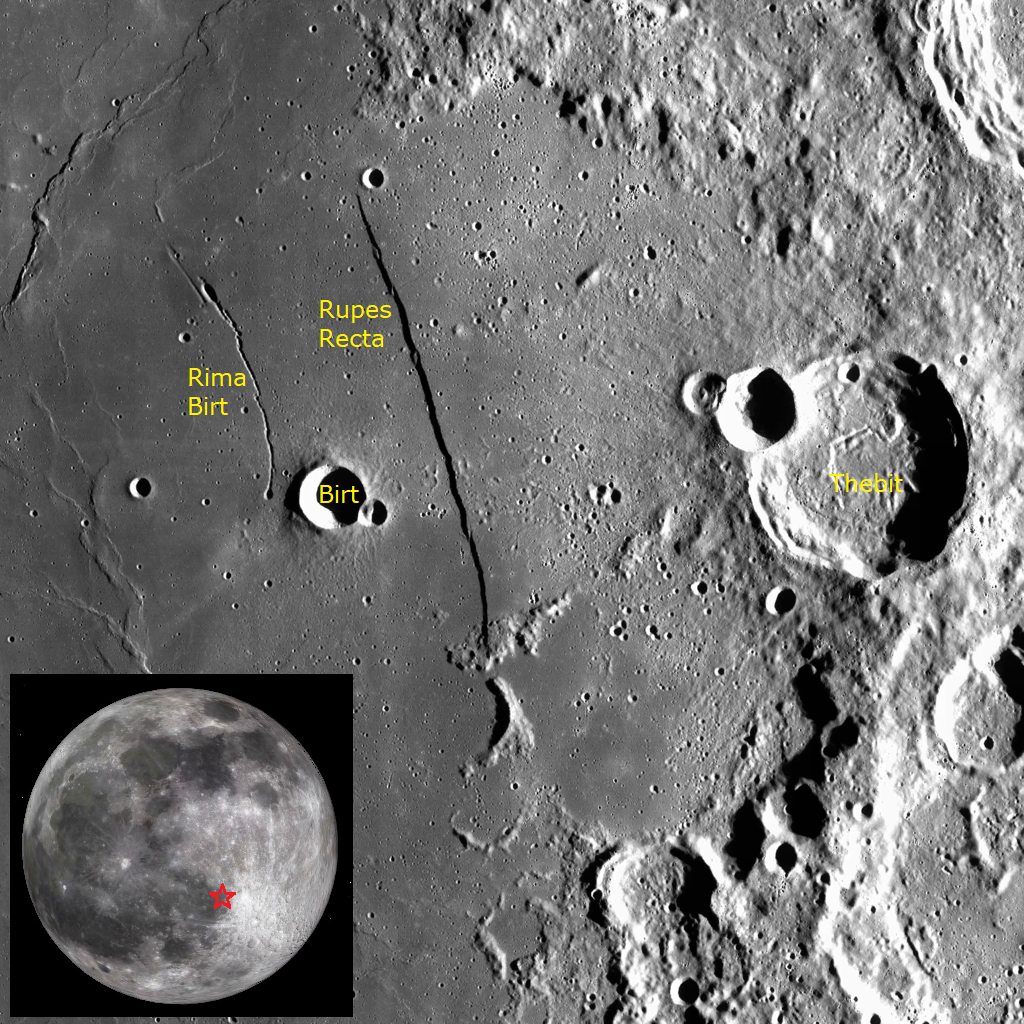
Tonight (Sunday) the bright, 67%-illuminated moon will shine among the faint stars of Cancer (the Crab). Hide the moon just outside the upper left edge of your binoculars’ field of view and look for a busy clump of stars toward the right side of the view. Those are the open star cluster known as the Beehive, or Messier 44. For observers at the longitudes of Europe and Africa, the moon will be somewhat closer to the “bees”.
Sunday night will also be a fine time to check out the Lunar Straight Wall in Mare Nubium and the curved mountain chains to the right (lunar east) of Mare Imbrium. On Monday and Tuesday, look at the big crater Copernicus and the curved bay of Sinus Iridum and the dark circle of the basalt-flooded crater Plato. Wednesday will add the bright and coloured region around the crater Aristarchus. With the moon nearly full from Thursday onwards, look for the many ray systems encircling the freshest craters, including Tycho.
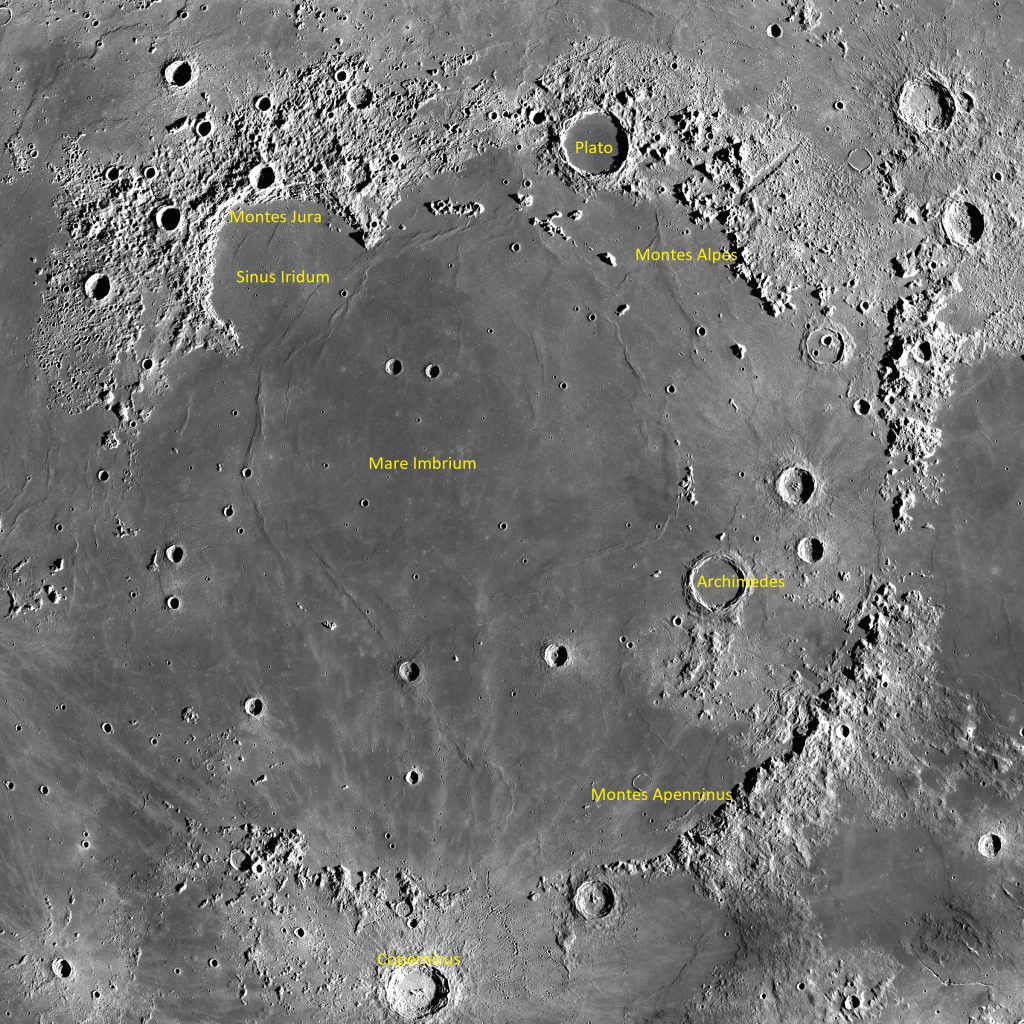
From Monday to Wednesday, the gibbous moon will traverse the constellation of Leo (the Lion), hopping over its brightest star Regulus from Monday to Tuesday. From Thursday to Saturday, the moon won’t rise until shortly before sunset. On those evenings, the nearly full moon will shine among the stars of Virgo (the Maiden).
The moon will officially reach its full phase at 2:55 pm EDT or 18:55 Greenwich Mean Time on Saturday, April 16. April’s full moon always shines in or near the stars of Virgo or Libra (the Scales). Every culture around the world has developed its own set of stories for the moon, and every month’s full moon now has one or more nick-names. The indigenous Ojibwe groups of the Great Lakes region call the April full moon Iskigamizige-giizis “Maple Sap Boiling Moon” or Namebine-giizis, the “Sucker Moon”. For them it signifies a time to learn cleansing and healing ways. The Cree of North America call it Niskipisim, the “the Goose Moon” – the time when the geese return with spring. For the Mi’kmaw people of Eastern Canada, this is Penatmuiku’s, the Birds Laying Eggs Time moon. The Cherokee call it Kawonuhi, the “the Flower Moon”, when the plants bloom. For Europeans, it is commonly called the Pink Moon, Sprouting Grass Moon, Egg Moon, or Fish Moon – terms that reflect the changes in the natural environment at this time of year. It seems that “pink” refers to the phlox flowers that bloom first during spring in eastern forests – and NOT to the way the moon will appear!
Full moons are, by definition, opposite to the sun in the sky, so they always rise in the east as the sun sets, and set in the west at sunrise. But lunar phases occur independently of Earth’s rotation. This time, the moon will be precisely full while it’s still well below the eastern horizon in the Americas – but observers at the longitudes of the United Kingdom, Spain, and western Africa will set it rise at sunset.
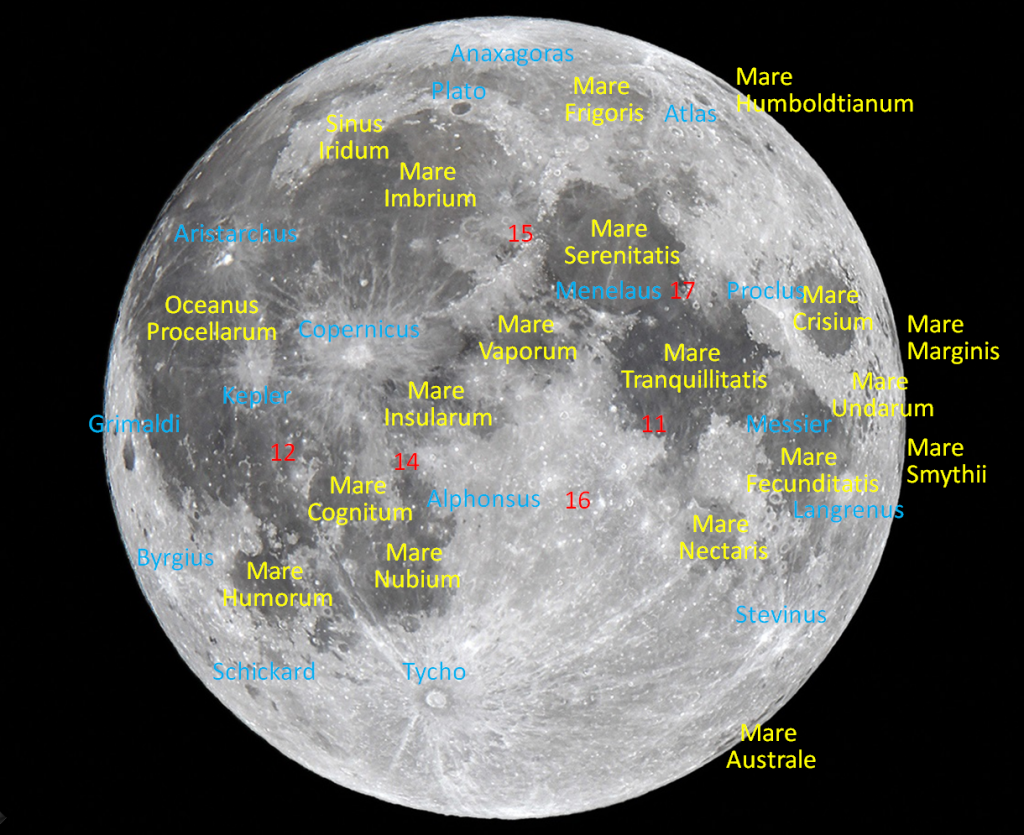
The moveable feast of Easter is always observed on the Sunday that follows the first full moon after the March equinox, making Saturday the Paschal Full Moon for 2022, and the next day Easter Sunday. The name “paschal” is derived from “Pascha”, a transliteration of the Aramaic word meaning Passover. The Paschal moon controls when both Easter and Passover are observed. Easter will arrive rather late this year because March’s full moon occurred only 2.5 days before the equinox.
Passover or Pesach is celebrated from the 15th through the 22nd of the Hebrew month of Nissan in the Jewish lunar calendar. Nissan began on April 2, when the new moon could first be spotted in Israel, so Passover will commence at sundown on Friday, April 15 and end at nightfall on Saturday, April 23 – also a bit later than normal.
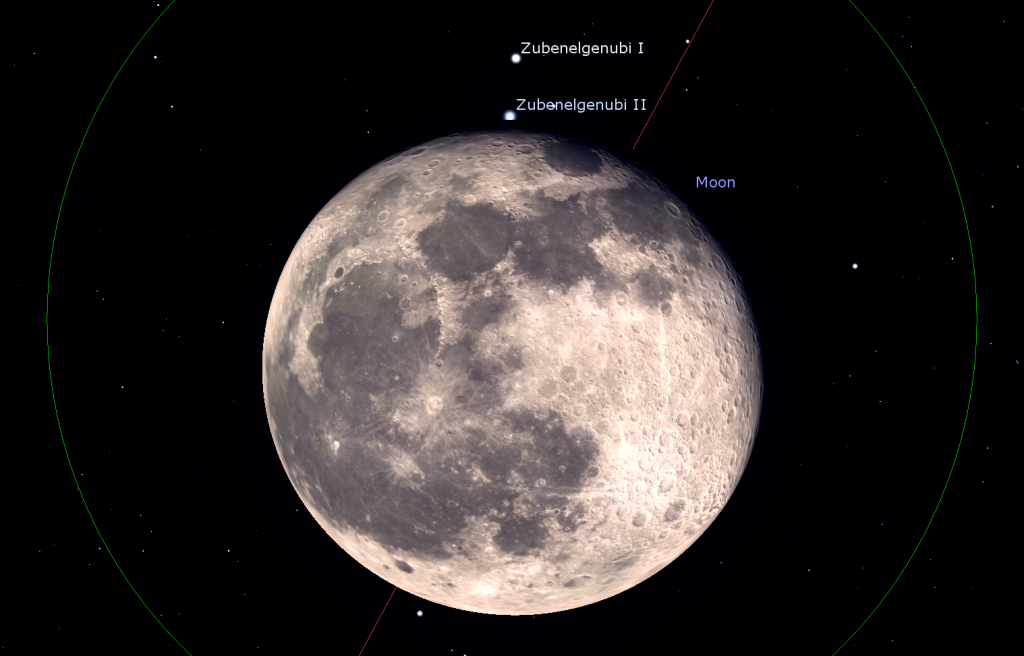
The moon will end the week next Sunday as a waning, 98%-illuminated orb shining in Libra (the Scales). Observers in the Côte d’Ivoire region of Africa and across the Atlantic Ocean to the Canadian Maritimes can use binoculars and any size of telescope to watch the moon pass in front of, or occult, the bright double star Zubenelgenubi (or Alpha 1,2 Librae) between about 01:30 and 03:05 GMT (times vary by latitude). For observers in the northeastern USA and east of Quebec, the moon will rise during the occultation. This event is fun because the close-together stars will disappear several minutes apart and then re-appear the same way. Mount your phone on your small telescope and take a video!
The Planets
With Uranus now hidden within the post-sunset twilight, we welcome Mercury into its best evening appearance of 2022 for mid-northern latitude observers. The speedy, magnitude -1.5 planet will climb a little higher in the western sky each evening, increasing its visibility day-by-day. You should be able to find the planet by about 8:30 pm in your local time zone, when it will be poised several finger widths above the west-northwestern horizon. An unobstructed horizon and cloudless skies to the west are a must. By the coming weekend, Mercury will be a fairly obvious white speck in a darkening sky, especially towards 9 pm.

Faster Mercury will race past slower Uranus on the coming weekend. On Sunday, April 17, Mercury will pass only a generous thumb’s width to the right (or 2 degrees to the celestial north) of Uranus – but their low altitude in a twilit sky will make seeing magnitude 5.9 Uranus a challenge. Always ensure that the sun has completely set before aiming binoculars or a backyard telescope towards the western horizon. The two planets will share the view in binoculars from Thursday to Wednesday.
Four bright planets will be arrayed like beads on a string in the eastern pre-dawn sky this week! By about 6:15 am local time on Monday morning, Jupiter should climb just high enough to spotted as a bright white dot shining above the eastern horizon. Much brighter Venus, then red Mars, and yellowish Saturn will be spread out in a 30 degrees-long line to Jupiter’s upper right (celestial west). As the sky brightens, the fainter planets Mars and Saturn will fade from sight first. To see the planets (without Jupiter) shining in a dark sky among the stars of Capricornus (the Sea-Goat) and Aquarius (the Water-Bearer), head outside by about 5:45 am local time.

Every morning, the faster eastward motions of Venus and Mars will see them travel farther from Saturn and closer to Jupiter. In a telescope Venus will exhibit a half-illuminated, waxing gibbous phase that even good binoculars can reveal. Any size of telescope will show you Saturn’s full globe, its rings, and perhaps a few moons, while Mars will exhibit a tiny, 92%-illuminated disk. (Be sure to turn all optics away from the eastern horizon before the sun rises.) Jupiter will also get a little higher and farther from the sun with each passing day.
On the mornings surrounding Tuesday, April 12, observers in the tropics and points farther south can watch Jupiter and its Galilean moons pass extremely close to the distant blue planet Neptune. The two planets will share the view in a telescope eyepiece from April 6 to April 19. Jupiter will approach Neptune from the upper right (or celestial west) until Tuesday. On that morning, Neptune will be located only 6.5 arc-minutes to Jupiter’s southeast, making a terrific astrophotography opportunity. From Wednesday onward, Jupiter will shift progressively eastward away from Neptune.

Don’t forget that the magnitude 8.9 dwarf planet (1) Ceres will be located about a thumb’s width to the right (or 1.4° to the celestial north) of an open star cluster named NGC 1746 tonight (Sunday). Every subsequent night it will shift a little higher compared to the cluster.
Lyrids Meteor Shower
The annual Lyrids meteor shower, derived from particles dropped by comet C/1861 G1 (Thatcher), runs from April 16 to 30 and will peak in intensity before dawn on Friday, April 22, worldwide. Start keeping an eye to skies for some meteors once the shower period opens this weekend. The Lyrids shower can deliver up to 18 meteors per hour, with occasional fireballs. True Lyrids will appear to be travelling away from a point in space (the shower’s radiant) near the bright star Vega, which will be high in the eastern sky before dawn. Since a bright moon will be shining in the post-midnight sky during the peak period, our best bet for meteor-watching will be late evening. I’ll share some tips for seeing meteors next week.
Moon-friendly Sights
If you missed last week’s list of sights to see while the moon is around, I posted it here.
Public Astro-Themed Events
Every Monday evening, York University’s Allan I. Carswell Observatory runs an online star party – broadcasting views from four telescopes/cameras, answering viewer questions, and taking requests! Details are here. They host in-person viewing on the first clear Wednesday night each month. Other Wednesdays they stream views online via the observatory YouTube channel. Details are here.
My free, family-friendly Insider’s Guide to the Galaxy webcasts with Samantha Jewett of RASC National returns on Tuesday, April 12 at 3:30 pm EDT, when we’ll explore the sights to see on the moon’s Sea of Tranquility – using unaided eyes, through binoculars, and in telescopes. Plus, we’ll continue with our Messier Objects observing certificate program and share some galaxy-viewing tips. You can find more details and the schedule of future sessions here.
On Wednesday evening, April 13 at 7:30 pm EDT, the RASC Toronto Centre will live stream their monthly Speakers Night meeting. This month will feature Dr. Carl E. Fields, RPF Distinguished Postdoctoral Fellow, Los Alamos National Laboratory. His talk is titled The Remarkable Death of a Massive Star, about the events that produce supernovae, black holes, and neutron stars. Everyone is invited to watch the presentation live on the RASC Toronto Centre YouTube channel. Details are here.
On Friday evening, April 22 at 7:30 pm EDT, the Speakers Night meeting of the RASC Mississauga Centre will feature Dr. Chris Impey, Steward Observatory, University of Arizona. His talk is titled Astrobiology – How strange life might be? It’s about the bizarre life forms that may populate our Universe. Everyone is invited to attend the presentation live on Zoom (link here). More details are here.
Public sessions at the David Dunlap Observatory may not be running at the moment, but RASC are pleased to offer some virtual experiences instead in partnership with Richmond Hill. The modest fee supports RASC’s education and public outreach efforts at DDO.
On Saturday night, April 23 from 8:30 to 10:00 pm EDT, tune in for DDO Up in the Sky. During the family-friendly session, RASC astronomers will live-stream views through their telescopes and the giant 74” telescope at DDO (pre-recorded views will be used if skies are cloudy). Only one registration per household is required. Deadline to register for this program is Wed., April 20, 2022 at 3 pm. Prior to the start of the program, registrants will be emailed the virtual program links. More information is here and the registration link is here.
On Sunday afternoon, April 24 from 12:30 to 1 pm EDT, tune in for DDO Sunday Sungazing. Safely observe the sun with RASC, from the comfort of your home! During these family-friendly sessions, a DDO Astronomer will answer your questions about our closest star: the sun! Learn how the sun works and how it affects our home planet. Live-streamed views of the sun through small telescopes will be included, weather permitting. Only one registration per household is required. Deadline to register for this program is Wed., April 20, 2022 at 3 pm. Prior to the start of the program, registrants will be emailed the virtual program links. More information is here and the registration link is here.
Don’t forget to take advantage of the astronomy-themed YouTube videos posted by RASC Toronto Centre and RASC Canada.
Space Station Flyovers
The ISS (or International Space Station) will not be visible gliding silently over the GTA this week.
Keep looking up, and enjoy the sky when you do. I love questions and requests. Send me some!